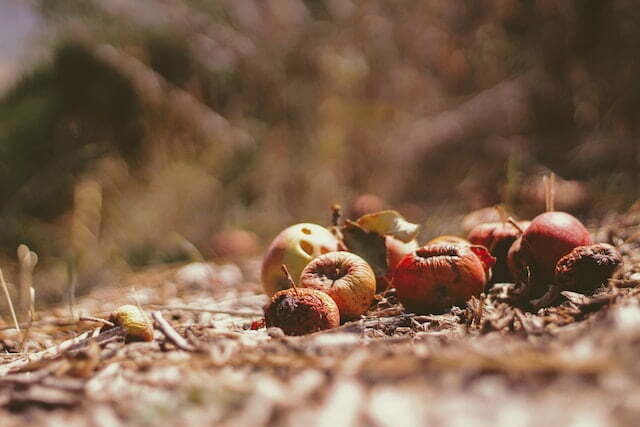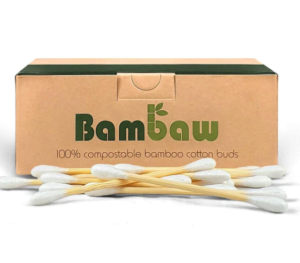What is composting?
Composting is the process of breaking down organic matter into nutrient-rich soil. This can be achieved through a variety of methods, including using a compost bin or pile, vermiculture (using worms to break down materials), or even in-ground composting.
The basic idea behind composting is that by providing an environment for microorganisms to break down organic matter like food scraps and yard waste, you can create a soil amendment that will enrich your garden and reduce waste.
In order for composting to work effectively, it’s important to maintain the right balance of green (nitrogen-rich) and brown (carbon-rich) materials. Green materials might include vegetable scraps or fresh grass clippings, while brown materials could include things like dried leaves or straw.
When done correctly, composting can help reduce greenhouse gas emissions from landfills while also producing a valuable resource for home gardens.
Why is composting important?
Composting is an essential practice that helps to reduce the amount of waste going into landfills. When we compost, we take organic matter such as food scraps and yard waste and turn it into nutrient-rich soil that can be used in gardens, farms or parks.
By diverting this organic material from landfills, we reduce the amount of methane gas produced by decomposing materials. Methane is a potent greenhouse gas that contributes to climate change.
Moreover, composting has many benefits for plants and the environment. It improves soil structure, water retention and nutrient content which leads to healthier plant growth with reduced need for chemical fertilisers.
In addition, composting reduces our reliance on synthetic fertilisers which have been linked to harmful effects on human health including cancer risks.
Furthermore, by reducing the amount of waste going into landfills through composting practices we also save valuable space which can be used for other purposes such as wildlife habitats or recreational areas.
Composting plays an important role in reducing greenhouse gases emissions while improving soil quality leading to healthier plants growth without harming our health nor polluting nature further.
The different types of composting
There are several different types of composting methods that you can use to turn your organic waste into nutrient-rich soil. The method you choose will depend on a variety of factors, such as the amount and type of waste you have, how much space you have available, and your level of experience.
Hot Composting
This is one of the simple/common types of composting. This involves creating a pile that heats up naturally as microorganisms break down the materials inside. Hot compost piles require frequent turning to ensure that all materials are evenly broken down.
Vermicomposting
Using worms to break down organic material is called vermicomposting. In this method, red wigglers are added to a container filled with food scraps and bedding material like shredded paper or leaves.
Bokashi Composting
In this method, composting relies on bacteria to ferment kitchen waste in an anaerobic environment before adding it to a traditional composter or burying it directly in soil. This method breaks down even meat and dairy products.
Cold Composting
For those who don’t want to deal with turning piles or managing worms, there’s also passive or cold composting which simply means allowing nature to take its course by leaving organic matter outside covered with hay for 6 months at least without any work required from the owner!
Whatever method you decide on, remember that successful compost requires the right balance between carbon-rich browns (like dried leaves) and nitrogen-rich greens (like vegetable scraps). With patience and dedication, anyone can create their own nutritious garden soil through home-based methods!
How to get started with composting?
Composting is a sustainable practice that can greatly benefit the environment and your garden. If you’re interested in getting started, there are a few things to keep in mind.
Choose a suitable location for your compost bin or pile. It should be in an area that is easily accessible but also out of the way so it doesn’t become an eyesore. Additionally, it’s important to choose a location that receives ample sunlight and has good drainage.
Next, decide on what type of method you want to use. Each method has its own benefits and drawbacks depending on your needs.
Once you have chosen your preferred method, start collecting organic waste items such as fruit and vegetable scraps, coffee grounds and eggshells. Avoid adding meat or dairy products as they can attract pests.
Assemble your materials into layers starting with dry carbon-rich materials like leaves or newspaper followed by wet nitrogen-rich materials like food scraps. Make sure each layer is moist but not too wet otherwise it will slow down the decomposition process.
Monitor the temperature of your pile regularly and turn it occasionally to speed up the decomposition process. Once ready after some months, use this nutrient-dense soil amendment for all of your gardening needs!
With time and patience (usually 6-12 months), your compost will transform into nutrient-rich soil perfect for gardening.
Start composting at home

Are you interested in starting the process at home? It’s a great way to reduce waste and create nutrient-rich soil for your plants. Here are some tips to get started:
First, choose a location for your compost bin or pile. A sunny spot is ideal, but make sure it’s easily accessible and not too far from your kitchen.
Next, decide what type of container you want to use. You can purchase a compost bin or build one yourself using materials like wood pallets or wire mesh.
Once you have your container set up, start adding food scraps like fruit peels and vegetable trimmings, along with yard waste like leaves and grass clippings. Avoid adding meats, dairy products or anything that has been treated with chemicals.
It’s important to keep the compost moist but not too wet. Use a hose or watering can as needed to keep it damp.
Mix the contents occasionally with a pitchfork or shovel to aerate the compost and speed up the process.
Overall process may take some time before you see results but stick with it! Your efforts will pay off when you have rich soil full of nutrients for all of your gardening needs.
Troubleshooting your compost?
Composting is an amazing way to reduce waste and create nutrient-rich soil for your garden. However, sometimes things don’t go as planned when it comes to composting and you may run into some issues. Don’t worry! With a little troubleshooting, you can get back on track.
One common issue that people face with their compost pile is a bad smell. This can be caused by too much moisture or not enough air circulation. To fix this problem, try adding dry materials like leaves or straw to absorb excess moisture and ensure that the pile has proper airflow.
Another issue that might arise is slow decomposition. If your compost isn’t breaking down as quickly as you’d like, it could be due to insufficient nitrogen content or improper layering of materials. Adding more green material such as grass clippings or vegetable scraps will boost the nitrogen levels in your pile while making sure there are alternating layers of green and brown materials will help speed up the process.
If pests such as rodents or flies are becoming a problem in your compost bin, make sure to bury food scraps deep within the pile rather than leaving them exposed on top where they can attract unwanted visitors.
By troubleshooting these common problems associated with composting, you should be able to turn any setbacks into successes!
How to use your compost?
Now that you have successfully created your own compost, the next question is how to use it. There are several ways to utilise your nutrient-rich soil amendment.
The first and most common way is to spread it over your garden beds or potted plants. Simply sprinkle a layer of compost on top of the soil and gently mix it in with a garden fork or hoe. This will provide valuable nutrients to your plants and improve soil structure.
Another use for compost is as a mulch around trees, shrubs, and other landscape plants. Spread a layer of compost 2-3 inches thick around the base of each plant, being careful not to pile it up against the trunk or stems. This will help retain moisture in the soil and suppress weed growth while providing organic matter for microorganisms.
You can also make “compost tea” by steeping a bag of finished compost in water for several days until it turns into liquid fertiliser. Dilute this mixture with water before applying directly onto the leaves or roots of plants.
Don’t forget about using your compost in indoor houseplants! Mix some into potting soil when repotting or simply sprinkle on top as an additional source of nutrients.
There are many creative ways to use your homemade compost – experiment and see what works best for you!
10 benefits of composting
1. Waste Reduction: Composting diverts organic waste from landfills, reducing the amount of waste that would otherwise contribute to methane emissions, a potent greenhouse gas.
2. Soil Enrichment: Compost is a nutrient-rich soil amendment that improves soil structure, enhances its fertility, and promotes healthier plant growth.
3. Nutrient Recycling: Composting allows the recycling of nutrients found in organic waste back into the soil, creating a sustainable cycle of nutrient availability for plants.
4. Carbon Sequestration: Composting sequesters carbon in the soil, helping to mitigate climate change by reducing the concentration of greenhouse gases in the atmosphere.
5. Water Retention and Erosion Control: Compost improves soil’s water-holding capacity, reducing water runoff and erosion, thus conserving water resources and protecting our landscapes.
6. Soil Health and Microbial Activity: Compost enhances soil health by promoting beneficial microbial activity, which supports nutrient cycling and contributes to disease suppression.
7. Reduction of Chemical Dependency: By using compost, farmers and gardeners can reduce their reliance on synthetic fertilisers and pesticides, minimising the potential negative environmental impacts associated with their use.
8. Enhanced Biodiversity: Compost-enriched soil fosters diverse and thriving ecosystems, supporting beneficial organisms such as earthworms, insects, and microorganisms crucial for soil health and plant vitality.
9. Reduced Soil Erosion and Runoff: Compost improves soil structure, reducing the risk of erosion and preventing the runoff of pollutants into water bodies, leading to improved water quality.
10. Community Engagement and Education: Composting initiatives can engage communities, schools, and individuals in sustainable practices, fostering environmental awareness, and promoting a sense of responsibility for waste reduction.
In our next article, you can explore more about composting.


[…] our previous article you have looked into the basics, understood the idea of composting and the benefits composting has […]